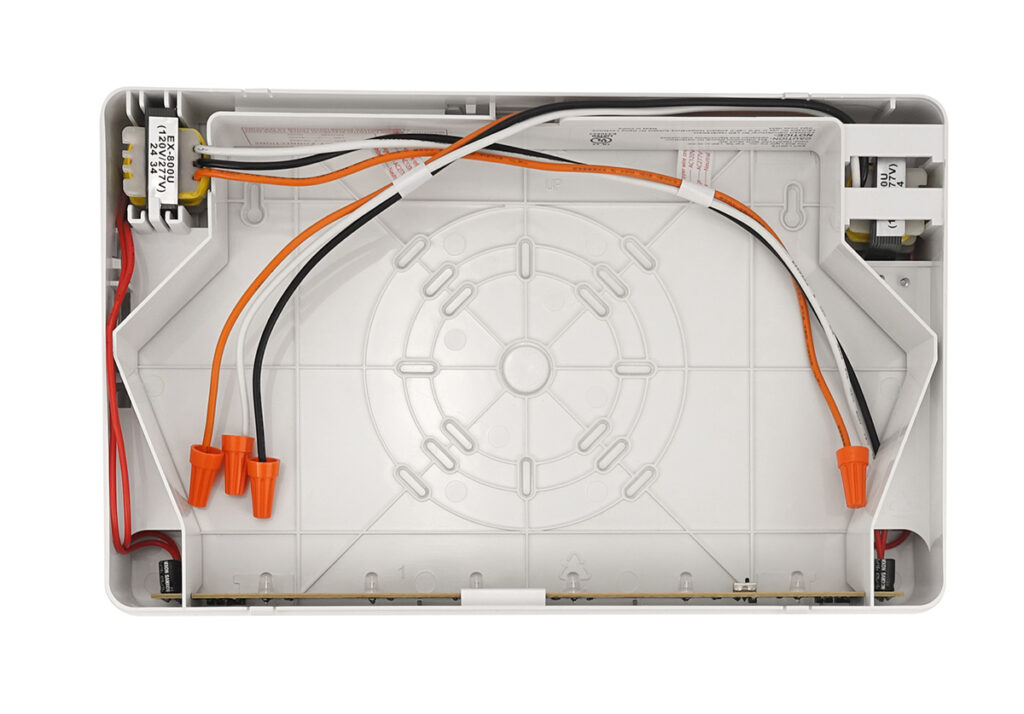Dual Circuit Exit Signs
Dual circuit exit signs are designed without a battery and operate using two independent power circuits, each connected directly to external power sources. These signs rely solely on these power circuits, without any internal battery backup.
Key Features:
Two Independent Power Circuits:
- The exit sign is connected to two separate power circuits within the building’s electrical system.
- If one circuit fails, the second circuit provides power, ensuring that the sign remains illuminated.
No Internal Battery:
- Unlike traditional exit signs with a battery backup, these signs do not have a battery to provide emergency power.
- The absence of a battery means that the exit sign requires a reliable secondary power source to function in case of a power failure.
Automatic Power Transfer:
- The sign is designed to automatically switch to the secondary circuit if the primary circuit loses power.
- This transfer happens seamlessly without the need for any manual intervention.
Dependence on Building Power Systems:
- Dual circuit exit signs without batteries depend entirely on the building’s electrical infrastructure.
- They are usually integrated into buildings that have emergency power systems, such as a generator, inverter systems or an uninterruptible power supply (UPS), to provide power in case of a main circuit failure.
Benefits:
Reduced Maintenance: Without a battery to maintain or replace, these exit signs require less frequent maintenance.
Cost-Effective: Eliminating the need for a battery can reduce the overall cost of the sign and maintenance expenses.
Reliable in Certain Installations: They are most effective in buildings that have robust and reliable backup power systems, such as those with emergency generators.
Limitations:
Dependence on Backup Power Systems: The exit sign will only function during a power outage if the building’s emergency power systems are operational.
Not Suitable for All Applications: In buildings without reliable emergency power, a battery-backed exit sign is often a better choice to ensure illumination.
Typical Uses:
Large Commercial Buildings: Where there is a reliable backup power supply or emergency generators.
Hospitals, Airports, and Industrial Facilities: Where a consistent and monitored emergency power system is already in place.
In summary, dual circuit exit signs without batteries are designed for environments that have dependable external emergency power systems. They provide a reliable solution without the need for battery maintenance but depend entirely on the building’s backup power infrastructure to operate during outages.

